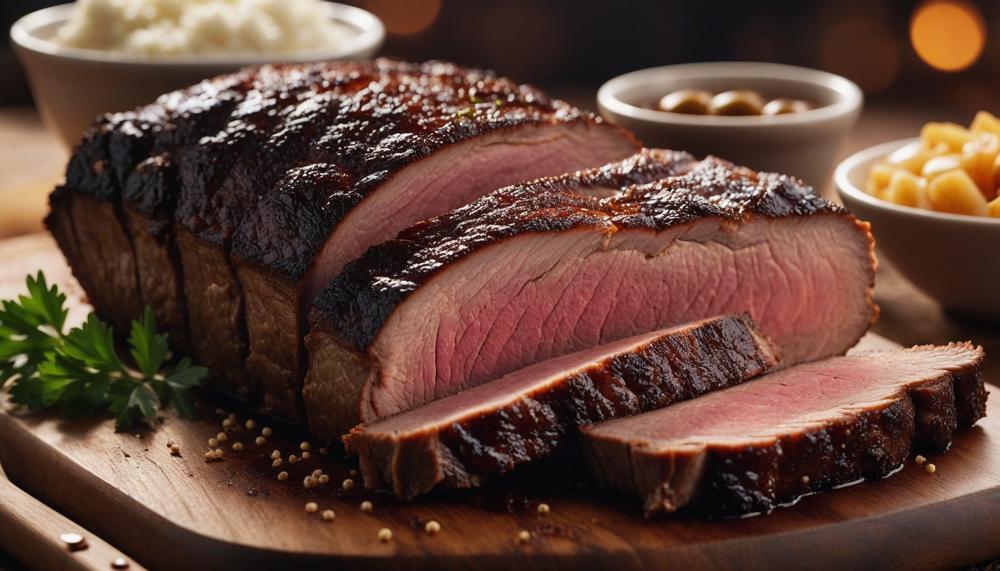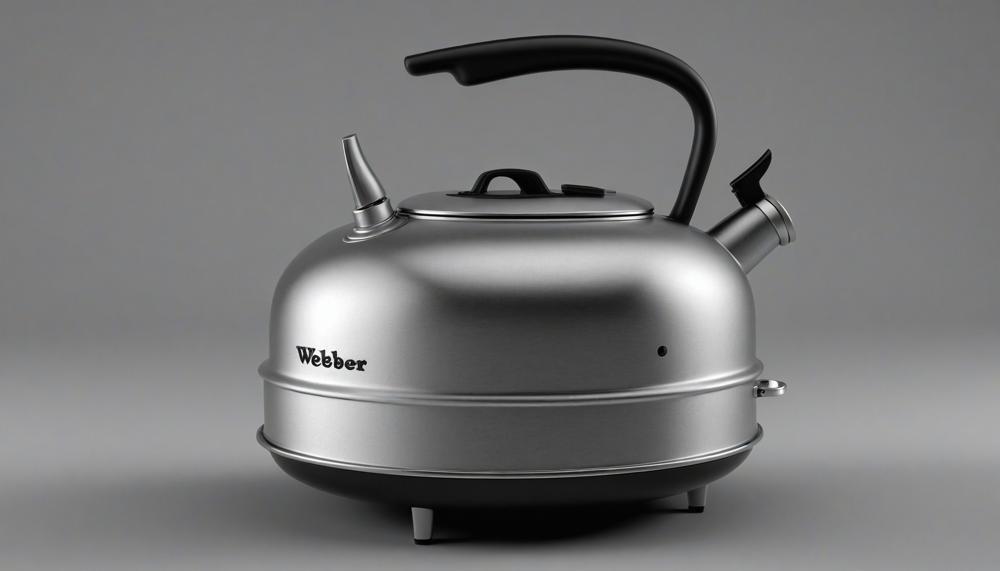Contents
How Long Should a Brisket Rest? The Secret to Perfect Barbecue
Picture this: after hours of careful smoking, the aroma of tender brisket fills the air, tempting you with its smoky allure. But before you slice into this masterpiece, there’s a crucial step that often gets overlooked—resting. Resting a brisket isn’t just about patience; it’s about achieving that melt-in-your-mouth texture and maximizing flavor.
Key Takeaways:
- Minimum Resting Time: Let your brisket rest for at least 30 minutes. This allows the juices, which have been pushed towards the center during cooking, to redistribute throughout the meat.
- Ideal Duration: Aim for 1 to 2 hours of resting time for optimal results. This period ensures that the brisket remains juicy and tender without losing heat excessively.
- Temperature Control: Maintain an internal temperature of at least 140°F (60°C) during the resting period to ensure food safety standards are met.
- Commercial Settings: In restaurants or BBQ joints, briskets may be held for longer using specialized equipment like cambros, maintaining safe temperatures and preserving quality.
- Avoiding the Danger Zone: Do not let a brisket sit between 40°F (4°C) and 140°F (60°C) for extended periods, as this promotes bacterial growth.
By allowing your brisket to rest adequately, you’re not just waiting—it’s a crucial part of the cooking process that enhances both texture and taste. Whether you’re a backyard enthusiast or a seasoned pitmaster, mastering the art of resting will elevate your barbecue game to new heights.
Why is Resting Important
| Impact of Resting on Brisket | Details | Insights |
| Enhanced Flavor | Resting allows juices to redistribute within the brisket, enhancing its natural richness and savory taste. | Resting preserves the smoked flavor while preventing moisture loss, ensuring each bite is succulent. |
| Improved Tenderness | During resting, connective tissues continue to break down, making the brisket more tender and easier to slice. | Adequate resting time (around 1-2 hours) helps maintain optimal texture and juiciness. |
| Juice Retention | Without resting, immediate slicing can lead to juice loss, resulting in a drier brisket. | Resting preserves moisture, crucial for a tender and flavourful brisket, by allowing time for juices to redistribute. |
| Temperature Control | It’s essential to maintain an internal temperature above 140°F during resting to ensure food safety. | Resting for up to 2 hours balances flavor development and food safety, ensuring a safe and delicious brisket. |
Resting a brisket after cooking is critical for achieving optimal flavor and tenderness. During this period, the brisket undergoes several crucial processes that significantly impact its final quality. Firstly, resting allows the juices within the meat to redistribute evenly. This redistribution ensures that each slice retains moisture, contributing to a more succulent eating experience.
Additionally, the connective tissues within the brisket continue to break down during resting, further enhancing tenderness. Proper resting also helps in maintaining the smoked flavor imparted during cooking, as it prevents immediate moisture loss upon slicing.
For the best results, briskets should ideally rest for at least one hour, allowing ample time for these processes to occur. This period not only enhances flavor but also ensures that the brisket remains juicy and tender when served. It’s crucial to monitor the internal temperature of the brisket during resting to prevent any risks of bacterial growth, maintaining food safety standards throughout the process.
Ideal Resting Duration
The recommended ideal resting duration for a brisket before slicing and serving is 1 hour. This crucial period allows the brisket to reabsorb its juices, ensuring it remains moist and tender for a delightful dining experience. During this time, it’s best to keep the brisket wrapped to retain moisture and prevent it from drying out.
You can wrap it in aluminum foil to help maintain heat or place it in a towel and then into a dry insulated cooler if you need to hold it for up to 4 hours without compromising its texture or flavour.
| Key Points: | Details: | Source: |
| Ideal Resting Duration | 1 hour is recommended to reabsorb juices and maintain tenderness. | Serious Eats |
| Wrapping Method | Use aluminum foil or a towel in an insulated cooler to prevent moisture loss. | Amazing Ribs |
| Carryover Cooking | Brisket continues to cook internally during resting, influencing final texture. | BBQ Brethren |
Tenting the Meat
| Contribution to Resting Process | Importance in Achieving Optimal Results | Insights |
| Tenting the meat, such as brisket, facilitates a controlled resting environment where residual heat continues to gently cook the meat while allowing juices to redistribute. | It ensures that the brisket reaches its peak juiciness and tenderness by allowing the internal moisture to redistribute evenly throughout the meat. | Resting the brisket in a faux-Cambro setup, like wrapping it in foil or placing it in an insulated cooler, maintains ideal temperature and moisture levels. |
| This process helps the brisket remain hot for several hours post-cooking, which is crucial for enhancing its flavour and texture. | By maintaining these conditions, tenting prevents the brisket from drying out, ensuring it remains succulent and flavourful. | For larger cuts like brisket, tenting is essential to achieve the desired outcome of a moist, tender meat that is perfect for slicing and serving. |
Signs Your Brisket is Ready

To determine when your brisket is ready to be taken off the grill and allowed to rest, look for these key indicators:
Internal Temperature
The brisket is ready when its internal temperature reaches the 190-200°F (88-93°C) range. Use a reliable meat thermometer to check this.
Tenderness
Probe the brisket with a fork or skewer. It should slide in and out with little resistance, like butter. This is often referred to as the “probe test.”
Bark and Juices
The bark (outer crust) should be dark and firm. When you slice into the brisket, the juices should run clear, not pink.
Resting
After reaching the desired temperature, allow the brisket to rest. During this time, the temperature may rise slightly, ensuring the meat achieves the perfect texture. Resting allows the juices to redistribute, making the meat more tender and flavorful.
Common Mistakes
| Common Mistakes | Explanation | Preventive Measures |
| Impatience | Not allowing sufficient resting time, leading to loss of juices and less tender texture. | Patience is key. Follow recommended resting times based on brisket size and cook method. |
| Over-resting | Leaving the brisket to rest for too long, resulting in cold meat and potential texture issues. | Monitor internal temperature and consider tenting to maintain warmth without over-resting. |
| Incorrect Tenting | Improperly covering the brisket during rest, which can lead to uneven cooling and loss of moisture. | Use foil or butcher paper to tent brisket loosely, allowing heat retention while preventing excessive steaming. |
| Not Considering Brisket Size | Ignoring the impact of brisket size on resting time, leading to uneven temperature distribution. | Adjust resting duration based on brisket thickness and weight to ensure even cooking and juiciness. |
| Insufficient Preparation | Not planning ahead for the resting period, resulting in rushed slicing and serving. | Factor in resting time as part of your cooking schedule; aim for at least 30 minutes to 1 hour. |
After cooking a brisket, it’s crucial to understand the nuances of letting it rest. Impatience ranks among the top mistakes—failing to give the brisket ample time to rest leads to loss of precious juices and a less tender texture.
Conversely, over-resting is equally detrimental, as it can cause the meat to cool down excessively, compromising its texture. Proper tenting is key to maintaining optimal temperature during rest, ensuring the brisket stays warm without steaming too much.
Size matters when it comes to brisket resting. Larger cuts require longer resting periods to allow for even distribution of internal temperatures and juices. Lastly, adequate preparation is essential—planning ahead ensures you have sufficient time to let the brisket rest properly before slicing and serving, enhancing the overall dining experience.
Conclusion
After smoking a brisket to perfection, the resting phase plays a pivotal role in transforming your barbecue from merely good to exceptional.
Allowing the brisket to rest for at least 30 minutes is crucial, though aiming for a 1 to 2 hour resting period can yield even more succulent results. During this time, the brisket’s internal juices redistribute, ensuring every slice is tender and moist.
To maintain food safety and optimal quality, keep the brisket at an internal temperature above 140°F. This controlled rest not only enhances the flavor and tenderness of the brisket but also makes sure it stays safe to eat.
Wrapping the brisket in foil or placing it in an insulated container can help maintain the desired temperature without losing moisture.






